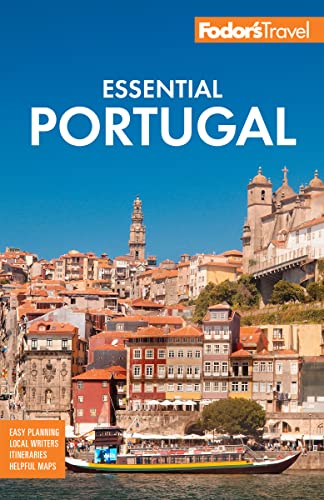The Alentejo and the Ribetejo
Lisbon residents increasingly see the wide-open spaces of the Alentejo as a refuge from city hustle, and life definitely moves at a slower pace here. Across mile after mile of rolling plains, sheep graze and black pigs root for acorns under cork oaks that are stripped of their bark every few years. The region bears the marks of ancient civilizations, and hilltop fortresses regularly heave into view. There are more fairy-tale castles along the River Tagus, just to the west. The Ribetejo is home to a number of impressive castles and walled cities that are fascinating to explore.
Fly in: Lisbon Airport, 7 km (4½ miles) north of the city center (LIS).
Fly out: Lisbon Airport, 7 km (4½ miles) north of the city center (LIS).
Day 1–2: Lisbon
If you've already seen Lisbon, you'll probably bypass the most touristy areas of Baixa and Belém in favor of more far-flung neighborhoods where you'll see more locals. You should plan on enjoying at least one meal by the river on a terrace and drinks at one of the many hilltop quiosques (refreshment stands) which have magnificent views. Take in a fado show as well, and stay up late for the unmatched nightlife.
Day 3: Arraiolos and Évora
On your third day, drive due east toward Évora, one of Portugal's most beautiful cities. Just before you get there, stop for lunch in the beautiful village of Arraiolos, famed for its handmade tapestries. The capital of the Upper Alentejo, Évora is a walled town known around the globe for its status as a UNESCO World Heritage Site. Lose yourself in the Cidade Velha, but be sure to see the main square, the Praça do Giraldo, the impressive Roman temple to Diana, and the haunting chapel of bones. Évora has some of the region's best restaurants and lodgings.
Day 4: Vila Viçosa and Estremoz
Before leaving the Évora area, consider stopping off at a local cromlech or dolmen—prehistoric stone monuments—that sprout up in open fields and other unexpected locations. Then head east to Vila Viçosa and Estremoz, two of region's most important "marble towns" (Portugal is Europe’s second-biggest producer, after Italy). Vila Viçosa's huge Praça da Republica, lined with orange trees and anchored by a castle on one end and a 17th-century church on the other, is one of the finest squares in all of the Alentejo. These towns have lovely pousadas where you can spend the night in style.
Days 5–6: Portalegre
Base yourself in the Portalegre area for a couple of days. Though the charms of the town itself are fairly soon exhausted, many stimulating trips out are possible: to the stunning hilltop villages of Castelo de Vide and Marvão, with its ancient battlements; to the Parque Natural da Serra de São Mamede—a lovely area for walking; or to the former royal stud farm at Alter do Chão.
Day 7: Abrantes
Head northwest toward the Tagus River, sighting the spectacular castle at Belver on your way. The flower-bedecked village of Sardoal makes for an enjoyable stop on the way to Abrantes—and yet another hilltop castle.
Day 8: Tomar and Fatima
Head to the pretty little town of Tomar, dominated by the hilltop Convento de Cristo (Convent of Christ) that was built in the 12th century by the Knights Templar. Nearby is the pilgrimage site of Fatima, which has one of the largest Catholic churches in the world.
Day 9: Santarém and Lisbon
If you don’t need to head straight back to Lisbon to catch a flight, spend at least half a day in the regional capital of Santarém, with its impressive Gothic church and fine views over the plains that you have just traversed.





